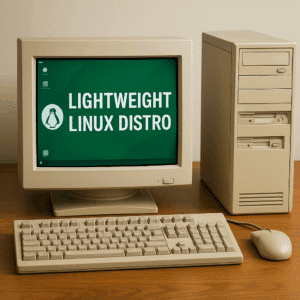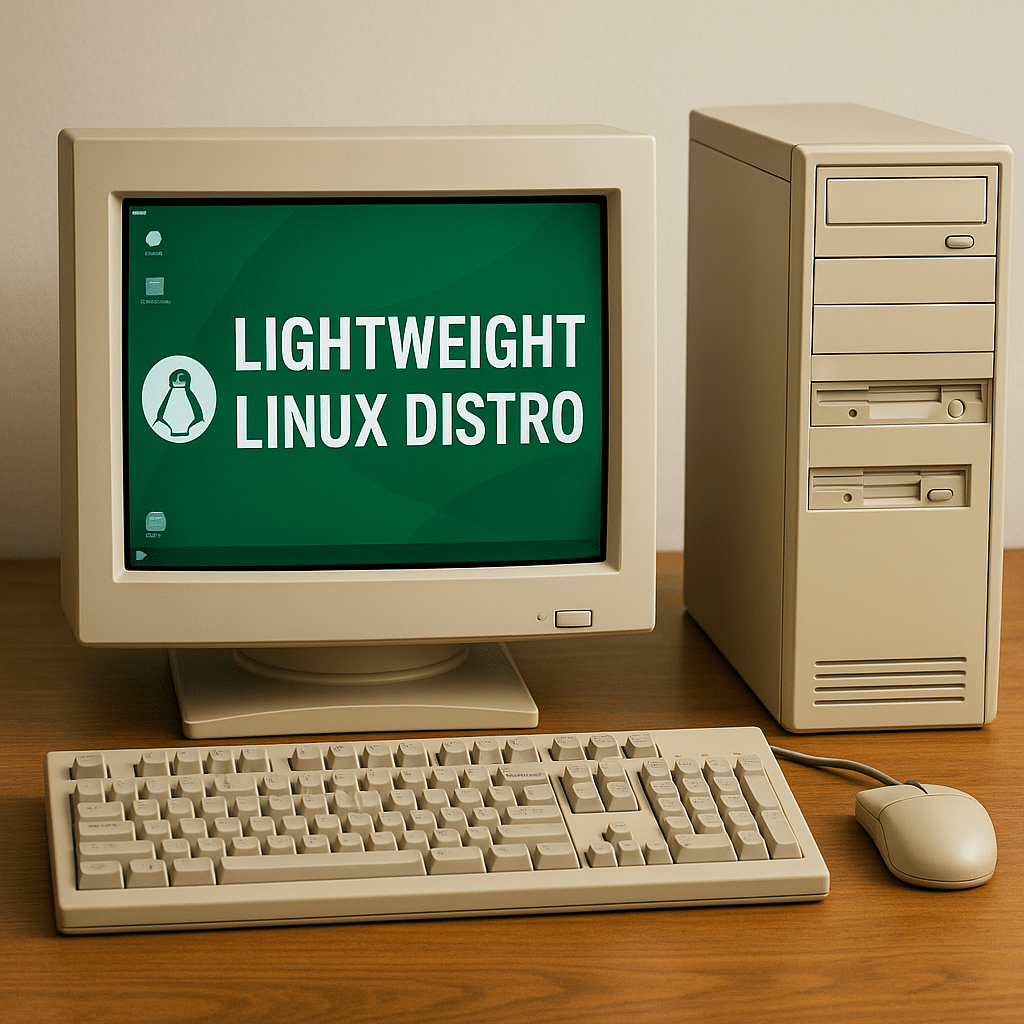
Lightweight Linux for Older Hardware
As we are learning, technology evolves rapidly and many older computers are left behind due to discontinued software updates, unsupported hardware, or slow performance with modern operating systems. However, these machines don’t have to end up in landfills. By installing a lightweight Linux distro, you can revive and repurpose older hardware, making it usable again for basic tasks like web browsing, word processing, or even light development work.
In this article, we’ll explore the best lightweight Linux distros available, how they breathe new life into aging desktops and laptops, and what makes them ideal for users transitioning from macOS or Windows. Moreover, these distros are ideal for older desktops, netbooks, and laptops that can’t run modern Windows or macOS efficiently—or at all.
What is a Lightweight Linux Distro?
Basically, a lightweight Linux distro is a stripped-down version of the Linux operating system optimized for low-resource environments. These distros are tailored to run efficiently on machines with limited CPU power, RAM (often 512MB–2GB), and storage.
Key characteristics:
- Minimal resource usage
– Fast boot times - Simplified or customizable desktop environments (like LXDE, XFCE, or Openbox)
- Low storage footprint
- Long-term support (in some cases)
– Simple and responsive user interfaces (XFCE, LXDE, or Openbox)
– Compatible with older 32-bit or legacy 64-bit systems
Why Use a Lightweight Linux Distro on Old Hardware?
- Extended Lifespan: You don’t need to discard older machines just because Windows 10 or macOS no longer supports them. Linux gives them new life.
2. Security Updates: Many lightweight distros receive regular patches and security updates, making them safer than outdated proprietary OS versions.
3. Open Source and Free: No licensing fees. You’re free to modify, distribute, and experiment.
4. User Control: Linux offers freedom over how your system runs and what it includes.
5. Performance Boost: These distros reduce system lag and allow for efficient multitasking, even on low-end CPUs.
Security & Maintenance Tips
Regular Updates: Use package managers like APT or Pacman to update frequently. Minimal Background Services: Disable unnecessary startup applications.
- Firewalls: Use ufw or iptables to configure basic firewall rules.
- Antivirus: Optional, but tools like ClamAV can be used for scanning.
Moreover, if you’re staring at an old laptop or desktop and wondering what to do with it, don’t rush to the nearest electronics store just yet. A lightweight Linux distro might be all you need to transform that seemingly obsolete hardware into a fast and functional machine. Whether you’re browsing the web, writing documents, or watching videos, these efficient and modern Linux systems deliver surprising performance without breaking the bank.
So take the plunge—resurrect your aging hardware and give Linux a spin. You might find that the best computer is the one you already own.
Top Lightweight Linux Distros for Old Computers
- Lubuntu
– Based on Ubuntu and uses LXQt desktop
– Great documentation and support
– 1GB RAM minimum; ideal for PCs from 2008–2012 - Linux Lite
– Designed for Windows users migrating to Linux
– XFCE desktop with Windows-like UI
– Includes Firefox, LibreOffice, and Thunderbird - Puppy Linux
– Incredibly small (around 300MB)
– Loads into RAM for blazing speed
– Runs on systems as old as Pentium III - antiX
– Debian-based without systemd
– Lightweight IceWM window manager
– Supports very old hardware with as little as 256MB RAM - Tiny Core Linux
– Extremely minimalist (as low as 16MB ISO)
– Highly modular—add only what you need - Advanced users only due to manual setup
- MX Linux
– Midweight but efficient enough for older 64-bit laptops
– User-friendly with XFCE or Fluxbox options
– Community-driven and polished - Peppermint OS
– Based on Debian/Ubuntu with cloud focus
– Lightweight and fast
– Excellent for netbooks or low-end laptops
Desktop Environments: A Comparison
|
Environment RAM Usage User Friendliness Customizability |
|
LXQt Low High Moderate |
|
XFCE Low High High |
|
JWM Very Low Moderate Low |
|
Fluxbox Very Low Low Moderate |
|
Moksha Low Moderate High |
Installation Tips for Lightweight Linux Distros
– Create a Live USB: Use tools like Rufus (Windows) or Etcher (cross-platform) to create a bootable USB.
– Check Compatibility: Make sure your target distro supports your CPU architecture (32-bit or 64-bit).
– Backup First: Before installing, backup any data on the system.
– Choose Lighter Apps: Replace bloated apps with lightweight ones (FeatherPad, AbiWord, Midori browser, etc.).
Use Cases: How People Use Lightweight Linux Distros
– Educational Labs: Schools use Lubuntu or Linux Lite on older donated PCs.
– Retro Computing: Developers run Puppy Linux on Pentium 4 hardware for legacy projects.
– Internet Terminals: antiX and Tiny Core Linux used in libraries and kiosks.
– Personal Revival: Home users repurpose old laptops into Linux-powered machines for kids, guests, or light web browsing.
Transitioning from Windows or macOS to Linux
As a result, while Linux can feel different, many lightweight distros are designed to ease this transition. Linux Lite and Zorin OS Lite offer UI elements and menus that mimic the Windows environment.
Things to expect:
– File systems differ (ext4 vs. NTFS)
– Package managers replace app stores (APT, RPM, etc.)
– Terminal usage may be needed occasionally, but most tasks are GUI-driven
FAQs
Q: Can I run a lightweight Linux distro on a computer with 1GB RAM?
A: Absolutely. Lubuntu, Puppy Linux, and antiX are perfect for systems with 512MB–1GB RAM.
Q: Will my Wi-Fi and printer work on Linux?
A: Most major distros include open-source drivers. Some peripherals may need proprietary drivers or additional configuration.
Q: Is Linux hard to learn?
A: Not with the right distro. Linux Lite, Lubuntu, and MX Linux are beginner-friendly with large online communities.
Q: Is it secure?
A: Yes, Linux offers excellent built-in security, regular updates, and is far less targeted by malware than Windows.
Don’t Toss That Old PC—Revive It with Linux
In addition, a lightweight Linux distro is more than just a second chance for outdated hardware but it’s a gateway to a fast, secure, and customizable computing experience. Moreover, whether you’re tech-savvy or just want to browse the web on an old laptop, there’s a distro out there for you.
Furthermore, make the most of your legacy machines and join a growing community of Linux users who believe in freedom, performance, and sustainability.
As a result, our team at Data Recovery Cincinnati LLC can help with guidance!!

Telephone No.5133389756
